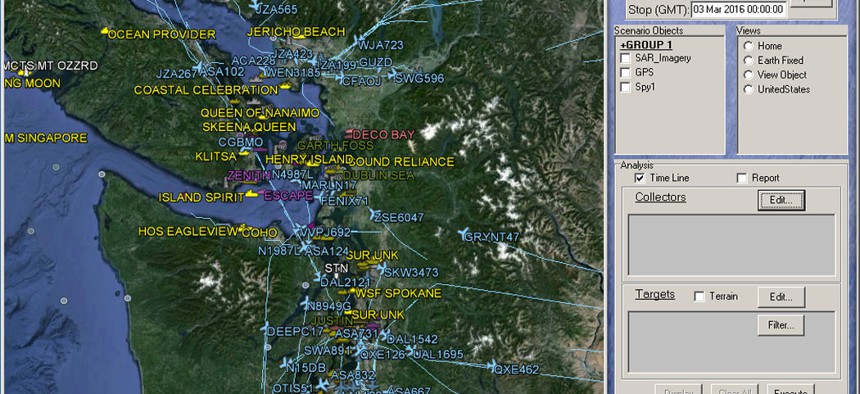Big data approach for UAS situational awareness
Simulyze uses big data analytics to provide a clearer picture of what happening around UAS operations.
One side of gaining situational awareness in the field is collecting data, images and video from unmanned vehicles and other sensors, but the other side is sorting through all that information to make sense of it, which is a big data and analytics challenge. That’s the approach one company is taking.
Simulyze, an operational intelligence and technology application company, can trace its roots in UAS operations to its work with the military post-9/11. Developed from its Flight Control application that has been used by the military for the last 16 years, “we’re expanding the focus to the UAS marketplace [because] it has a very similar problem set,” Simulyze CEO and President Kevin Gallagher told Defense Systems, regarding its Mission Insight application. “We really don’t actually process the imaging, per se, or the video,” he said. Rather, they specialize in fusing various data sets together as a means of providing a more complete picture for operational intelligence and situational awareness.
“We process all the data about the platform, what the sensor is, where it’s looking, how fast it’s going, where it’s at,” he said, adding that the system takes into account ground observers that might be outfitted with a GPS receiver to see their location, what they see or the location or velocity of other aircraft in the area. This data can be processed to support real-time operations and planning and post-mission analysis.
In its military context, the application is more of an overall situational awareness tool. It doesn’t directly support UAS operations. UAS operators might have a Simulze display as a secondary display, Gallagher said. Simulyze provides the picture of everything going on, such as friendly forces, hostile forces and maritime asset location in an integrated single picture with a primary ISR common operating picture.
Mission Insight’s data is displayed on a graphical interface displaying the various data sets collected. “From the visual perspective…we work with a lot of visualizations like Google Earth, for example, you’ll be able to get the complete picture of where you’re at. In Google Earth you’ll see we’ll have weather…we’ll have the aircraft itself, we’ll have other aircraft in the area, we’ll have GPS, we’ll have the observers,” Gallagher said. “We’ll put all that data into a single display like Google Earth and you can click on the objects [or icons] and you can pull up extra information.” It connects directly to ground stations for MQ-1 Predators and MQ-9 Reapers to get location information of the aircraft.
Simulyze processes most of the C4ISR data feeds and put all the disparate data together to give analysis in real time.
NEXT STORY: Growth in cyber threats reflected in budget





